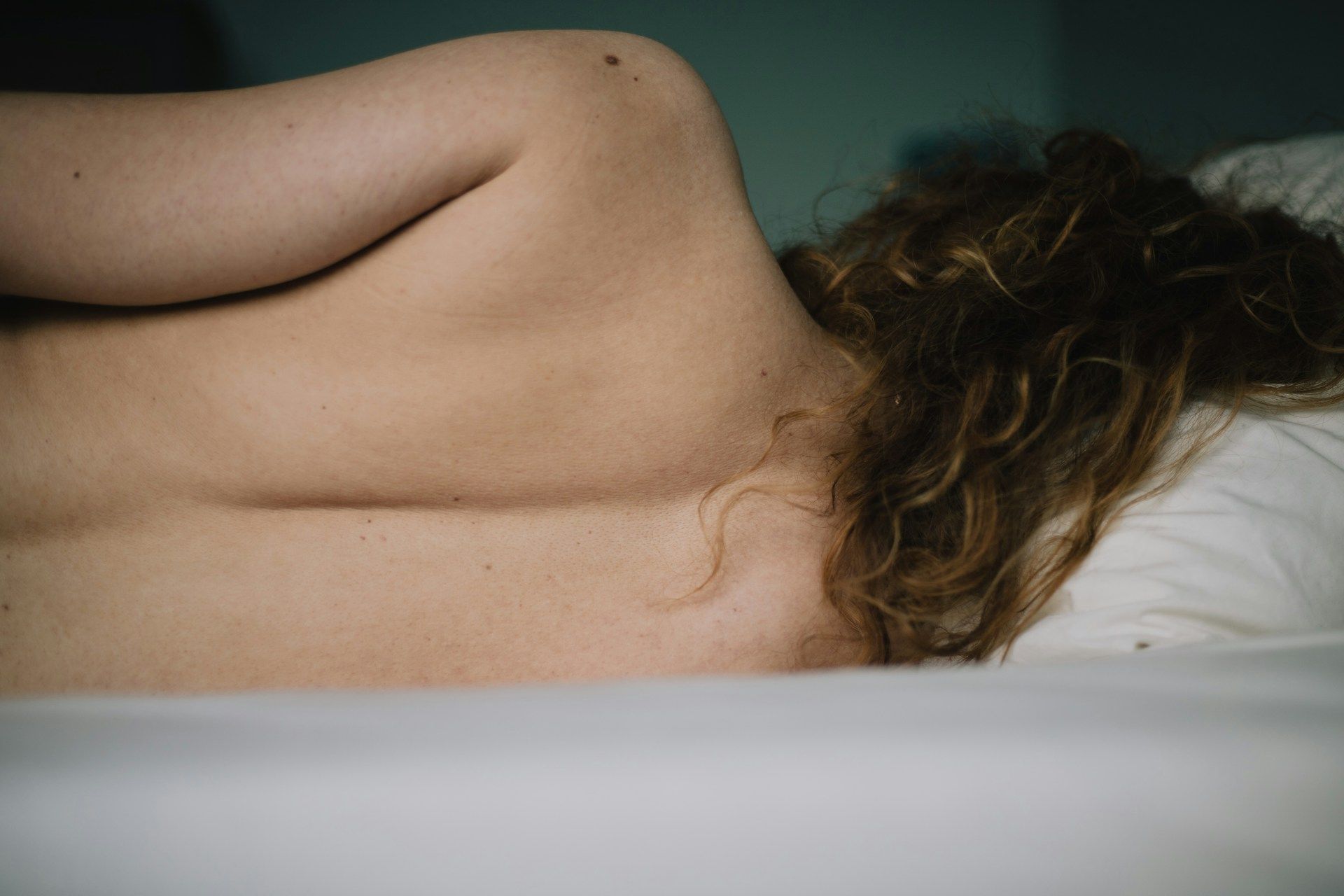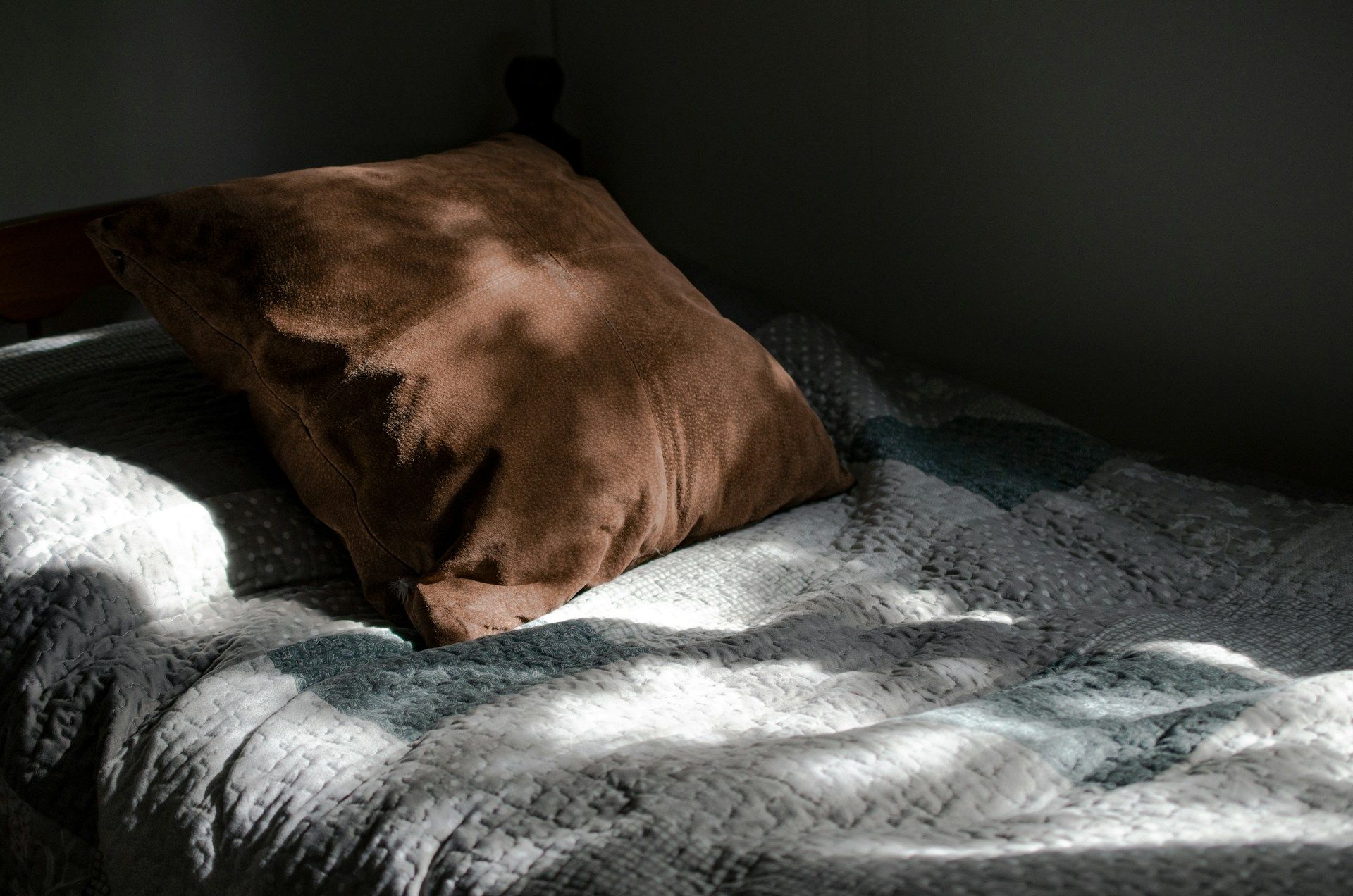How To Sleep With Scoliosis: What’s The Best Sleeping Position?
Written by Dr. JoAnn Giesenhaus

Getting a night of quality sleep is vital for everyone. So, if you’re missing out on those all-important ZZZs, you might feel frustrated and a little cranky. After all, sleep is essential for ensuring your body is rested and rejuvenated.
However, sleeping with scoliosis isn’t always easy. This structural spinal condition involves an unnatural sideways spinal formation that twists or curves to the side by more than 10 degrees (Johns Hopkins Medicine, 2019). While usually diagnosed in children, scoliosis affects people of all ages.
Though each case is different, some might find sleeping with scoliosis challenging. Finding the best way to sleep with scoliosis is crucial to resolve any condition-related sleep troubles. Leaving you feeling rested and ready to take on the day.
In this blog, we’re looking at the possible sleeping positions for scoliosis and how they can help. Scroll down to learn more.
How Scoliosis Affects Sleep
A night of good sleep helps your body repair itself overnight. When we rest, our body refreshes and renews itself for the next day. This includes your immune system, blood vessels, and even your brain (Wein, 2021).
Unfortunately, depending on your case of scoliosis, there can be some adverse sleep effects. Those with a more extreme curve or twist may experience pain or difficulty getting comfortable. In rare cases, scoliosis can also significantly affect respiratory function, making breathing difficult at night (Qiabi et al., 2015).
If you can’t get comfortable due to your scoliosis, then you'll likely wake up feeling irritable, drowsy, and lethargic. But these aren’t the only consequences. Long-term sleep deficiency has been linked to depression, high blood pressure, obesity, diabetes, kidney disease, and other chronic health conditions (National Heart, Lung, and Blood Institute, 2022).
All is not lost though, some scoliosis sleeping positions can relieve this discomfort. See the best sleeping positions for scoliosis below to learn more.
The Best Sleeping Positions for Scoliosis
Before we jump into how to sleep with scoliosis, it’s important to note that these positions are only to improve sleep quality and reduce pain. They can’t improve or affect scoliosis structurally.
The key aim for these scoliosis sleeping positions is to maintain optimal spinal alignment, reduce pressure points, and generally enhance comfort. Which can help you feel better and improve symptom management. Here’s what you need to know for each one.
Back Sleeping
When it comes to the best sleeping positions for scoliosis, sleeping flat on your back is the best route.
Back sleeping evenly distributes your weight along the spine, minimizing pressure points and keeping the spine neutral. This also ensures the spine isn’t exposed to uneven pressure of experiencing spinal tension — ideal if you experience back pain.
To sleep on your back correctly, you should ensure that your body is not twisted and your head is in the center of your pillow. You can add some extra neck and spine support using a supportive memory foam pillow with a head dip.
Shop All Memory Foam PillowsOut of all the sleeping positions, back sleeping is the most advantageous. Studies have proven that sleeping in “provocative” (non-neutral) positions leads to stiffness and back pain (Cary, Jacques, and Briffa, 2021. So, trying this position is beneficial to everyone, regardless of scoliosis presence.

Side Sleeping
Side sleeping is a popular scoliosis sleeping position. 4 out of 10 people use this position, and when done properly, it can even help your brain ward off neurological diseases (Leicht, 2017). But you must ensure you’re safely side-sleeping to protect your spine, neck, and back.
To get a good night’s sleep while side-sleeping:
- Ensure your neck and chin are aligned in the center of your shoulders. You should also try to align your shoulders with your hips.
- Keep your head looking forward.
- Avoid looking down or twisting your neck.
Should you sleep on your left or right side? Well, it doesn’t matter too much. Some studies have shown sleeping on your left helps digestion and promotes circulation. But the difference between sleeping on your right side isn’t significant. Neither side will worsen your scoliosis, so you can choose which feels more comfortable.
Sleeping With a Pillow Between the Knees
Did you know you can improve your comfort by adding a pillow between your knees?
Alongside sleeping on your side, you can add a pillow between your knees to improve your spinal alignment and support. This ensures your body’s weight is evenly distributed along the spine, reducing extra strain on your back.
However, ensure you’re in a healthy side sleeping position before adding a pillow between your legs. Keeping your spine protected is essential here.
Using a memory foam lower back pillow for between-the-knees support can improve sleep quality, spinal stiffness, and back discomfort (Chen et al., 2014). So, if you’re looking for a deep rest, consider adding a specialized pillow to your bedtime routine to unlock the benefits of memory foam.
Shop All Memory Foam Pillows
Sleeping With a Pillow Under the Lower Back
Similarly to the position above, you can upgrade the back sleeping position with a pillow under your lower back.
Placing a pillow under your lower back can help keep your spine straighter and neutral. Sleeping with a lower back pillow is often recommended alongside other therapies to combat lower back pain (Prommanon et al., 2015), so this could be a solution if sleeping with scoliosis causes aches and pains.
Avoid using old or deflated pillows for lower back support. If in doubt, check for signs of a bad pillow before you start sleeping. This might save you a few aches!
To sleep in this position, adopt the healthy back sleeping position. Then, place the pillow in the gap between your lower back and the bed. You can also try placing a small pillow behind your knees, as this reduces stress on your spine and supports your lower back (www.urmc.rochester.edu, n.d.).
Final Words
Experimenting with the best sleeping positions for scoliosis can help relieve back pain, improve sleep quality, and generally positively affect your daily life.
In addition to adopting healthy sleeping positions, sleeping with a memory foam pillow can enhance your night’s rest. Our specially designed ergonomic pillows are designed to promote better sleep and pain-free mornings for all users. Explore how the Groove Pillow can support your spine today.
Shop All Memory Foam PillowsReferences
- Cary, D., Jacques, A. and Briffa, K. (2021). Examining relationships between sleep posture, waking spinal symptoms and quality of sleep: A cross sectional study. PLOS ONE, 16(11), p.e0260582. doi:https://doi.org/10.1371/journal.pone.0260582.
- Chen, Z., Li, Y., Liu, R., Gao, D., Chen, Q., Hu, Z. and Guo, J. (2014). Effects of Interface Pressure Distribution on Human Sleep Quality. PLoS ONE, 9(6), p.e99969. doi:https://doi.org/10.1371/journal.pone.0099969.
- Johns Hopkins Medicine (2019). Scoliosis. [online] Johns Hopkins Medicine Health Library. Available at: https://www.hopkinsmedicine.org/health/conditions-and-diseases/scoliosis.
- Leicht, L. (2017). What’s the Best Position to Sleep In? [online] WebMD. Available at: https://www.webmd.com/sleep-disorders/best-sleep-positions.
- National Heart, Lung, and Blood Institute (2022). Sleep Deprivation and Deficiency - What Are Sleep Deprivation and Deficiency? | NHLBI, NIH. [online] www.nhlbi.nih.gov. Available at: https://www.nhlbi.nih.gov/health/sleep-deprivation#:~:text=Sleep%20deficiency%20is%20linked%20to.
- Prommanon, B., Puntumetakul, R., Puengsuwan, P., Chatchawan, U., Kamolrat, T., Rittitod, T. and Yamauchi, J. (2015). Effectiveness of a back care pillow as an adjuvant physical therapy for chronic non-specific low back pain treatment: a randomized controlled trial. Journal of Physical Therapy Science, 27(7), pp.2035–2038. doi:https://doi.org/10.1589/jpts.27.2035.
- Qiabi, M., Chagnon, K., Beaupré, A., Hercun, J. and Rakovich, G. (2015). Scoliosis and bronchial obstruction. Canadian Respiratory Journal : Journal of the Canadian Thoracic Society, [online] 22(4), pp.206–208. Available at: https://www.ncbi.nlm.nih.gov/pmc/articles/PMC4530852/#:~:text=Severe%20scoliosis%20may%20have%20a.
- Wein, H. (2021). Good sleep for good health. [online] NIH News in Health. Available at: https://newsinhealth.nih.gov/2021/04/good-sleep-good-health.
- www.urmc.rochester.edu. (n.d.). Good Sleeping Posture Helps Your Back - Health Encyclopedia - University of Rochester Medical Center. [online] Available at: https://www.urmc.rochester.edu/encyclopedia/content.aspx?ContentTypeID=1&ContentID=4460.
About The Author
Dr. JoAnn Giesenhaus is a dedicated chiropractor with over 20 years of experience, committed to helping people achieve vitality and live life to the fullest.
An expert in Corrective Care Programs, utilising advanced technology like Posture Screen, Sit Screen testing, Motion Study X-Rays, Arthrostim, and Vibracussor for gentle, effective spinal adjustments.

